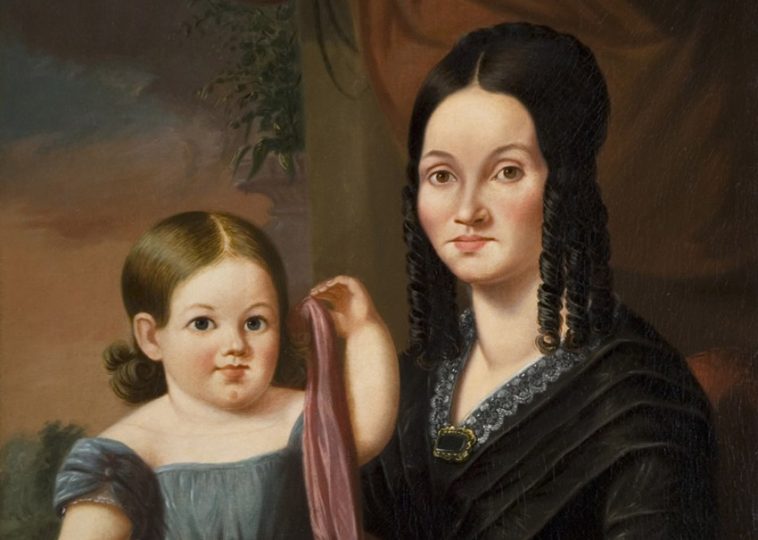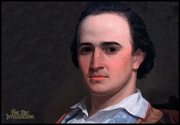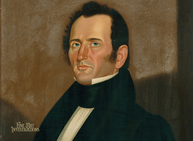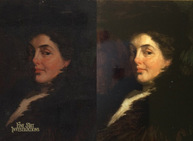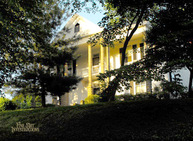Descendants of Mrs. David Andrews, Sr. (Margaret Baird) and her daughter Florence [Florie] (Mrs. John Taddeus Heard) wondered if George Caleb Bingham was the artist of their heirloom portrait. The descendants knew the portrait was painted in Boonville, Missouri, and they knew the sitters’ birth dates. The mother, Margaret Baird (Mrs. David Andrews), was born in Pittsburgh, Pennsylvania in 1817. …
Man in a Blue Vest
In the “Style of George Caleb Bingham” was the description of a portrait sold at auction several years ago. The winner bidder asked Fine Art Investigations if George Caleb Bingham created Man in a Blue Vest? Bingham? No. Not only did the technique differ, the painting had an entirely different sensibility. The dark-haired subject’s open collar, his dressing gown worn …
Recto and Verso: Shubael Allen
Recto – George Caleb Bingham Shubael Allen (1793- 1841) was New York native and a civil engineer. Before moving to Missouri by 1818, he helped build bridges in Pennsylvania and Kentucky. In 1822, in Boonville, Missouri, he married Dinah Ayers Trigg. They moved to Missouri’s western frontier where for several years they shared a dog trot cabin with Dinah’s sister …
Verso Stories: Supporting Actors
Recto and Verso The stories behind 19th century American portraits on this blog have so far spoken to the lives of people on the front of the canvas. The front of an artwork is referred to formally as “recto.” Verso” is the term for the back. The back of a painting is literally a support system. Beginning with this blog, …
Restoration vs. Conservation
“There are two ways for a painting to perish, the one is for it to be restored, the other is for it not to be restored.”—Étienne Gilson“Restoration is a necessary evil.”—Max Friedländer Restoration vs. Conservation is a frequent topic in conversations with clients about their heirloom portraits. This article by George Bisacca,Conservator Emeritus at The Metropolitan Museum of Art brilliantly explains the …
Stories Behind the Portraits: The Dunnicas
Discovering History through Art Historians usually add a painting as an illustration. Fine Art Investigations uses portraits as an entry point to history. An example is the stories behind the recently re-discovered portraits of the Dunnicas. The first part of their biography briefly described American expansion in the west after the War of 1812. Back when the Western frontier was central Missouri and …

